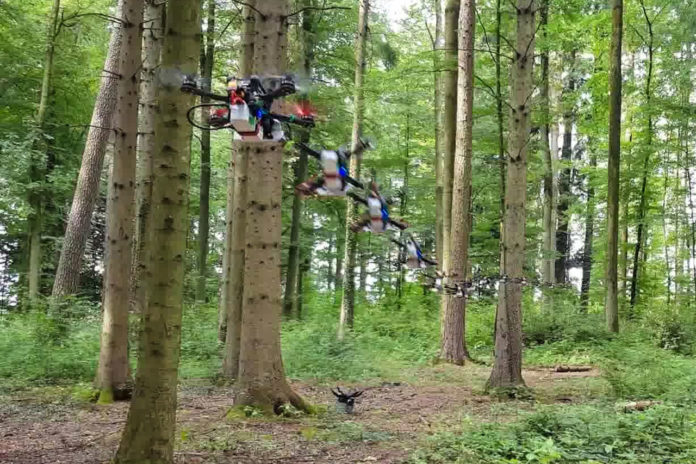Drones can provide a low-cost and low-impact solution to explore complex and unknown environments such as forests, buildings, or caves. They are fast, agile, and small, and they can carry sensors and payloads virtually everywhere. However, autonomous drones can hardly find their way through an unknown environment without navigation, which is usually done by an experienced human pilot.
Researchers are working hard towards independent autonomy for flying robots. A team of researchers at the University of Zurich have developed a new approach to autonomously fly quadcopters through the unknown, complex environments at high speeds using only onboard sensing and computation. The new approach enables an autonomous quadcopter to fly through previously unseen environments such as forests, buildings, ruins, and trains, keeping speeds of up to 40 km/h and without crashing into trees, walls, or other obstacles. The researchers note that the new approach could be useful in emergencies, on construction sites, or for security applications.
The team at the University of Zurich has created an algorithm that teaches a drone to fly in the real world using only onboard cameras and calculations. The neural network learned to fly by watching a kind of “simulated expert” – an algorithm that flew a computer-generated drone through a simulated environment full of complex obstacles. The algorithm was given complete information about the state of the quadcopter and the readings of its sensors at all times. The algorithm could rely on enough time and computational power to always find the best trajectory.
After being trained in simulation, the system was tested in the real world, where it was able to fly in a variety of environments without collisions. “While humans require years to train, the AI, leveraging high-performance simulators, can reach comparable navigation abilities much faster, basically overnight,” says Antonio Loquercio, a Ph.D. student and co-author of the paper.
“Interestingly, these simulators do not need to be an exact replica of the real world. If using the right approach, even simplistic simulators are sufficient,” adds Elia Kaufmann, another Ph.D. student, and co-author.
The researchers say that the same approach could be useful for improving the performance of autonomous cars or could even open the door to a new way of training AI systems for operations in domains where collecting data is difficult or impossible, for example, on other planets.
Next, the team will focus on improving drone flight and developing faster sensors that can provide more information about the environment in less time.
Earlier, researchers at the University of Zurich showed how a drone trained using its algorithm overtook two experienced human pilots on a race track.
